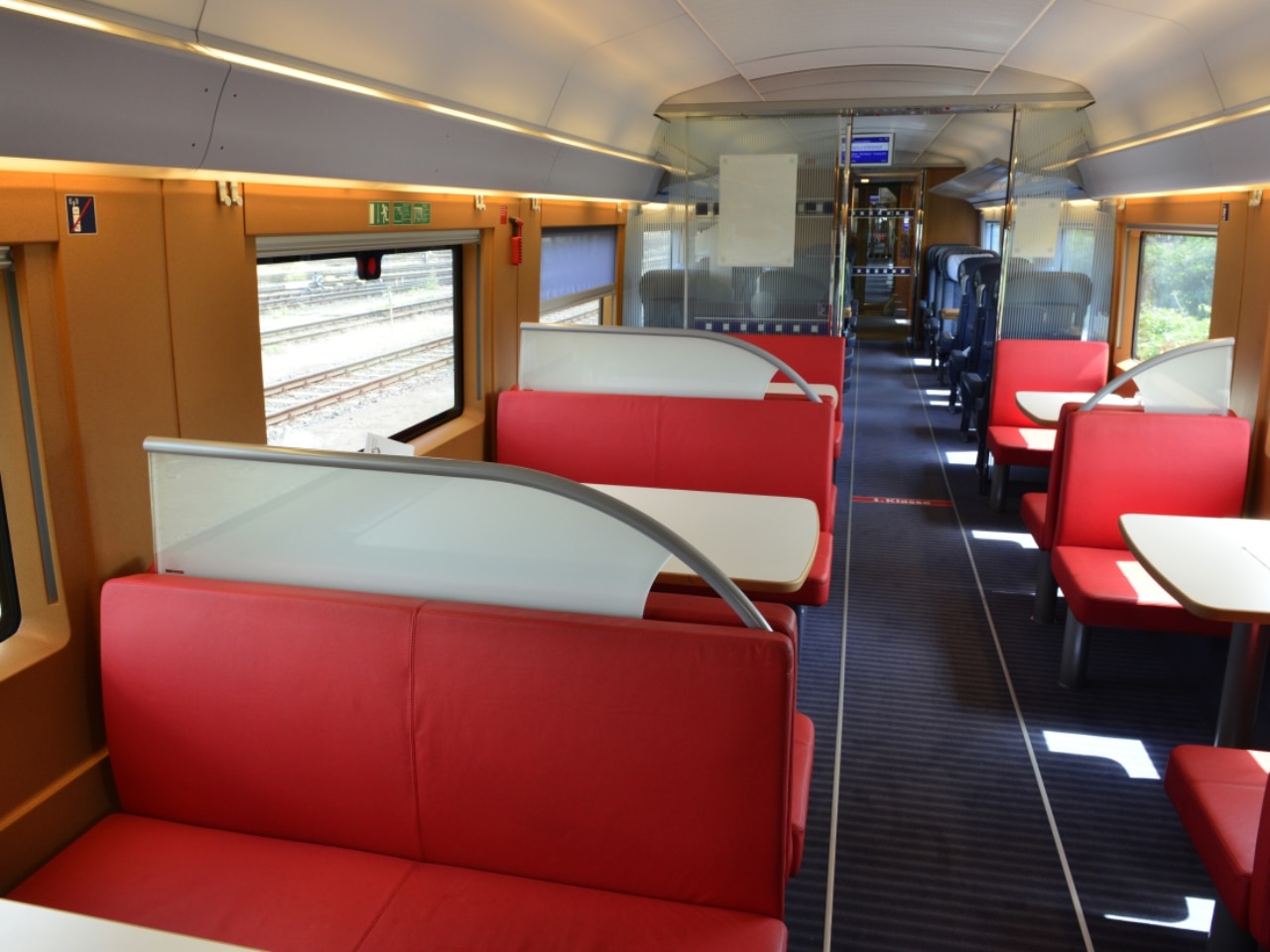When it went into service in 2000, it laid down a marker with a regular top speed of up to 300 kilometres per hour. This made the ICE 3 Germany's fastest train and particularly suitable for ICE journeys on the high-speed Cologne - Rhine/Main route. In addition, the ICE 3 is a true multiple unit. Unlike its predecessors that used power cars, the ICE 3’s drive is distributed across its eight carriages. This let it effortlessly master inclines of 4 per cent. Like the ICE 2, the ICE 3 could also be coupled. The third ICE generation now comprises three classes (403, 406 and 407), making it relatively diverse. In the following you will find interesting data, facts and images for the different classes of the ICE 3.
ICE 3 - Class 403 and 406
The class 403 is intended for use within Germany. The carriage interiors differ between the first and second series. The class 406 was designed as a multi-system variant for international use and is compatible with four European power systems. Currently, these trains are mainly used for connections to Brussels and Amsterdam.
The modernised ICE 3 multiple units of the 403 and 406 classes have been undergoing a gradual renovation since 2017. This is due to be completed by early 2024. The modernisation aims to make the trains more spacious, more informative and more enjoyable. There will also be an elegantly designed dining car with 20 seats. In addition, the redesign programme includes new seats, tables and luggage racks, as well as a new passenger information system. The picture gallery includes external views of the trains alongside before-and-after pictures of the modernisation. You can also view and download the layout of the class 403 redesign in the download area, as it is already on the rails.
Facts, figures and data
BR 403 - RD |
BR 406 |
|
|---|---|---|
| Start of operations | 2017 | 2000 |
| Number of trains | 49 | 13 |
| Number of carriages | 6 intermediate cars, 2 end cars | 6 intermediate cars, 2 end cars |
| Number of seats | 450 | 419 |
| Train length | 200 m | 200 m |
| Train weight (empty) | 435 t | 435 t |
| Maximum speed | 330 km/h | 330 km/h |
| International operation | no | Belgium, Netherlands |
More details on the ICE 3 classes 403 and 406
- Train overview and details of the ICE 3, class 403, first series for download (in German) (PDF, 519 KB)
- Train overview and details of the ICE 3, class 403, second series for download (in German) (PDF, 565 KB)
- Train overview and details of the ICE 3, class 403, redesign for download (in German) (PDF, 592 KB)
- Train overview and details of the ICE 3, class 406 for download (in German) (PDF, 510 KB)
ICE 3 - Class 407

Like the class 406, the class 407 is a multi-system variant, but it only entered service in 2013. The trains of this class are used for all connections to and from France, and can even reach speeds of up to 320 km/h while there. The class 407 is also used in part for individual ICE connections inside Germany. On top of this, the class 407 was the first ICE type to have an integrated lift for wheelchair users on board.
Facts, figures and data
BR 407 |
|
|---|---|
| Start of operations | 2013 |
| Number of trains | 17 |
| Number of carriages | 6 intermediate cars, 2 end cars |
| Number of seats | 444 |
| Train length | 201 m |
| Train weight (empty) | 492 t |
| Maximum speed | 330 km/h |
| International operation | France |














